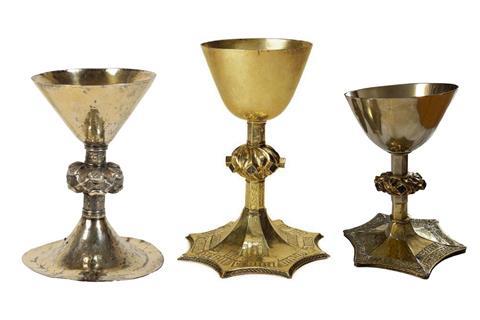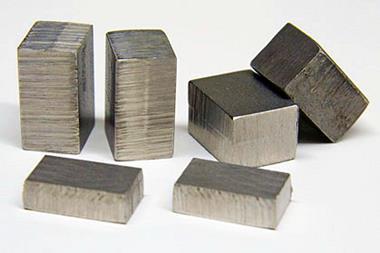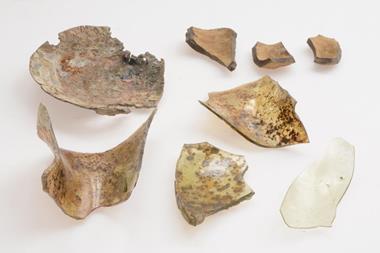Using XRF to uncover the secrets of three Irish chalices
It unfolded like an episode of Antiques Roadshow complete with a gasp-inducing reveal. The owners of a metal cup stored for years in a garden outbuilding sought an evaluation from experts at Duke’s Fine Art Auctioneers. The mystery metal cup was actually a silver liturgical chalice judged by Duke’s experts as ‘something special which needed further research’. Forensic examinations of art and artefacts can provide historical insight, plus assist experts in separating fakes from genuine articles. Whether auction house or courthouse, three attribution tools are often relied on to authenticate art and artefacts – connoisseurship, provenance and scientific analysis.1
Evaluations from external experts, including renowned silver expert Philippa Glanville and curators at the National Museum of Ireland, seemingly prompted Duke’s to list the mystery chalice as ‘an exceptionally rare Irish silver-gilt chalice, circa 1480’ that was ‘a rare survival from before the Protestant Reformation’. The Reformation saw many liturgical metalworks – like chalices – melted down.2 Duke’s predicted it would sell for £5,000–10,000, but after a heated battle between three Irish collectors, the chalice sold for £38,000 in 2021.
Such an auction result might seem surprising for a chalice without a confirmed provenance, but an expert’s eye for history, style, and craft goes a long way to constructing an artefact’s timeline.2 The mystery chalice’s shadowy timeline was recently illuminated by work done by researchers at Ireland’s Tyndall National Institute and University College Cork.3 Researchers conducted a x-ray fluorescence (XRF) investigation of the mystery chalice (dubbed the Ó Learghusa chalice), along with two stylistically similar chalices of established provenance housed in the National Museum of Ireland – the de Burgo–O’Malley (circa 1494) and TP-IEP chalices (circa 1589). This work is reportedly the first to comparably investigate late medieval chalices associated with Ireland, though XRF study of art and artefacts is well established. XRF offers rapid, non-destructive and reasonably priced elemental analysis, with portable instruments also available.4–6 XRF has revealed early drafts of ancient Egyptian art, the Pompeii victims’ final moments, a surprising layer to a Rembrandt masterpiece and the metallic mixtures of ancient jewels in the Benaki Museum in Athens, Greece.
To an expert eye, XRF analysis of metal artefacts reveals not just composition, but ‘manufacturing process, the provenance of raw materials, the geographical distribution of the ancient metallurgical technology, etc’.4 For all of its strengths, XRF has two limitations that must be kept in mind when evaluating art and artefacts.6 Low atomic number (<20) elements, upon excitation, emit radiation with lower energies that are difficult to detect. This limitation melts away for metalworks comprised of copper, gold, silver and their alloys, but can present a challenge when characterising iron alloys such as carbon steel. The second limitation is due to it being a surface technique sensitive to the composition, condition and thickness of an object’s outermost layers. Metals prone to corrosion can mislead, but decades of XRF archaeological work has forged guiding principles and best practices.

XRF analysis of the three chalices provided a catalogue of new insights into them all. Connoisseurship had previously linked the Ó Learghusa and de Burgo–O’Malley chalices and the XRF analysis revealed both the Ó Learghusa and de Burgo–O’Malley chalices were crafted from a silver-copper alloy. A chalice’s basic components are a base, a knop within the stem, and a bowl.3,7 While the base, knop and bowl of the Ó Learghusa chalice is mainly silver and copper, lead was detected in the knop and base but not the bowl. Low lead levels could signal a particular silver refining technique or that lead was added to render the copper more workable. Zinc was also detected in the Ó Learghusa chalice bowl, but not the knop or base. These differences suggested to researchers that the chalice’s knop and base were manufactured from different raw materials than the bowl.
Like the Ó Learghusa chalice, the base of the de Burgo–O’Malley chalice contained lead impurities. These two chalices also share a popular Middle Ages adornment technique – fire-gilding.3 Used to deposit a layer of gold on metalworks, fire-gilding involved the application of a paste composed of gold powder in liquid mercury, then firing to a high enough temperature to evaporate the mercury. XRF analysis allows analysts to easily spot the tell-tale mercury-gold ratios that herald fire-gilding and even particular fire-gilding recipes or craftspeople.6 Researchers were able to probe beneath chalice gilding because each chalice contained areas of exposed base material or non-gilding. Alterations to an object’s surface can be both a limitation and a boon, with exposure of what lies beneath allowing analysts to study previously hidden depths.
Analysis of the non-gilded depths and gilded surface of the TP-IEP chalice showed it to be a composite object. Analysis of the TP-IEP chalice’s base and bowl led researchers to hypothesise these components’ bulk were a ternary silver–copper–gold alloy. Gold-mercury ratios in certain areas and the absence of mercury in others indicated different gilding processes were used. Analysis of the knop’s decorative glass revealed the presence of lead glasses. However, the process to produce lead glass was patented in 1674.3 These and other results led researchers to posit the TP-IEP chalice had undergone alteration many years after it was fashioned.
As the chalice researchers pointed out in their recent Heritage Science paper, further study will reveal more historical and chemical insights.3 However, these groundbreaking findings seem to indicate that the anonymous buyer of the Ó Learghusa chalice made the right call when bidding on mystery.
References
1 A L Bandle, Int. J. Cult. Prop., 2015, 22, 379 (DOI: 10.1017/S0940739115000107)
2 P K Egan, Journal of the Galway Archaeological and Historical Society, 1956, 27, 33
3 V Biolcati et al., Herit. Sci., 2024, 12, 130 (DOI: 10.1186/s40494-024-01240-2)
4 I Liritzis and N Zacharias, X-Ray Fluorescence Spectrometry (XRF) in Geoarchaeology, 2011, 109 (DOI: 10.1007/978-1-4419-6886-9_6)
5 Analytical Methods Committee Amctb No. 108, Anal. Methods, 2021, 13, 3731 (DOI: 10.1039/d1ay90094c)
6 M Ferretti, J. Anal. At. Spectrom., 2014, 29, 1753 (DOI: 10.1039/C4JA00107A)
7 C Hourihane, The Grove Encyclopedia of Medieval Art and Architecture. Oxford University Press, 2012

















1 Reader's comment